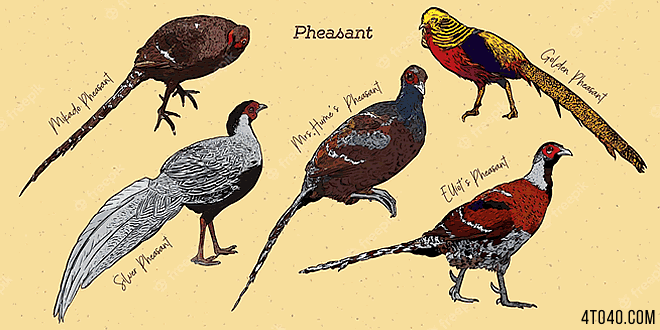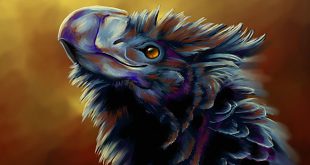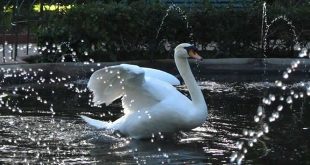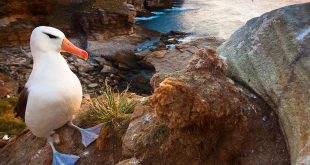Pheasant are a group of large birds in the order Galliformes. Males pheasants are usually larger than the females, and they have feathers of bright colours and long tails. There are 35 species of pheasant in 11 different genera.
In many countries pheasant species are hunted, often illegally, as game, and several species are threatened by this and other human activities.
Chukar is the official National bird of Pakistan.
| Kingdom: | Animalia |
| Phylum: | Chordata |
| Family: | Phasianidae |
| Order: | Galliformes |
| Class: | Aves |
Bird Encyclopedia for Kids:
Pheasant — Pheasants refer to some members of the Phasianinae (Horsfield, 1821) subfamily of Phasianidae in the order Galliformes.
Pheasants are characterised by strong sexual dimorphism, males being highly ornate with bright colours and adornments such as wattles and long tails. Males are usually larger than females and have longer tails. Males play no part in rearing the young. Pheasants typically eat seeds and some insects.
The best-known is the Common Pheasant, which is widespread throughout the world in introduced feral populations and in farm operations. Various other pheasant species are popular in aviaries, such as the Golden Pheasant (Chrysolophus pictus).
Common Pheasant:
The Common Pheasant (Phasianus colchicus), known in the US as the Ring-necked Pheasant or Chinese Pheasant, is a bird in the pheasant family. It is native to Asia but has been widely introduced elsewhere as a game bird.
The Common Pheasant is one of the world’s most hunted birds, where it has been introduced, and is also common on game farms where it is commercially farmed for this purpose.
The specific epithet, colchicus, refers to Colchis, a region in the Caucasus.
This species has a number of colloquial names, such as “Chinks” in the US “Mountain chicken” in China and “Phezzens” in Montana.
Golden Pheasant:
The Golden Pheasant or Chinese, (Chrysolophus pictus) is a gamebird of the order Galliformes (gallinaceous birds) and the family Phasianidae. It is native to forests in mountainous areas of western China but feral populations have been established in the United Kingdom and elsewhere.
The adult male is 90-105 cm in length, its tail accounting for two-thirds of the total length. It is unmistakable with its golden crest and rump and bright red body. The deep orange “cape” can be spread in display, appearing as an alternating black and orange fan that covers all of the face except its bright yellow eye, with a pinpoint black pupil.
Males have a golden-yellow crest with a hint of red at the tip. The face, throat, chin, and the sides of neck are rusty tan. The wattles and orbital skin are both yellow in colour, and the ruff or cape is light orange. The upper back is green and the rest of the back and rump are golden-yellow in colour. The tertiaries are blue whereas the scapulars are dark red. Another characteristic of the male plumage is the central tail feathers which are black spotted with cinnamon as well as the tip of the tail being a cinnamon buff. The upper tail coverts are the same colour as the central tail feathers. Males also have a scarlet breast, and scarlet and light chestnut flanks and underparts. Lower legs and feet are a dull yellow.
 Kids Portal For Parents India Kids Network
Kids Portal For Parents India Kids Network




